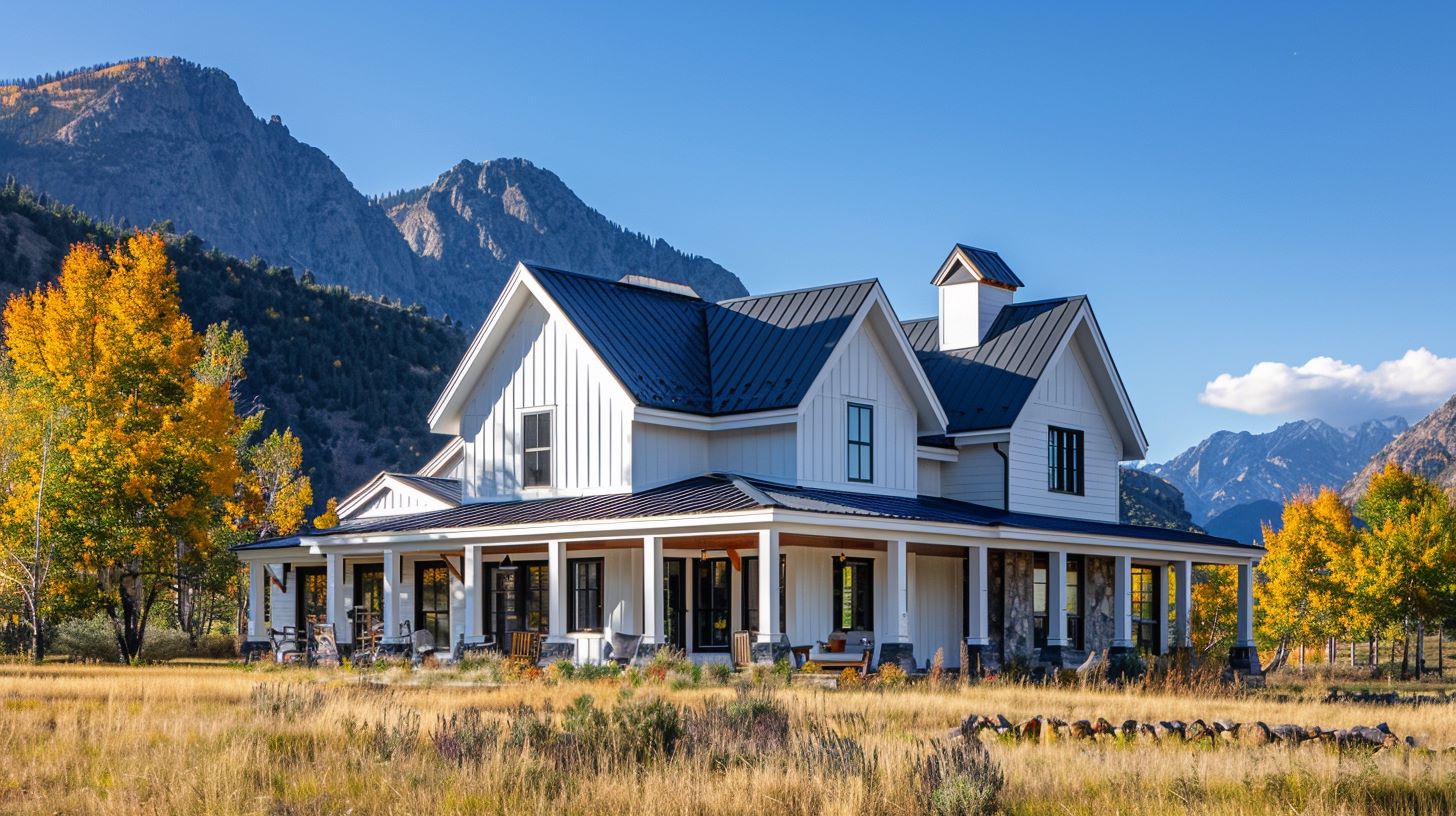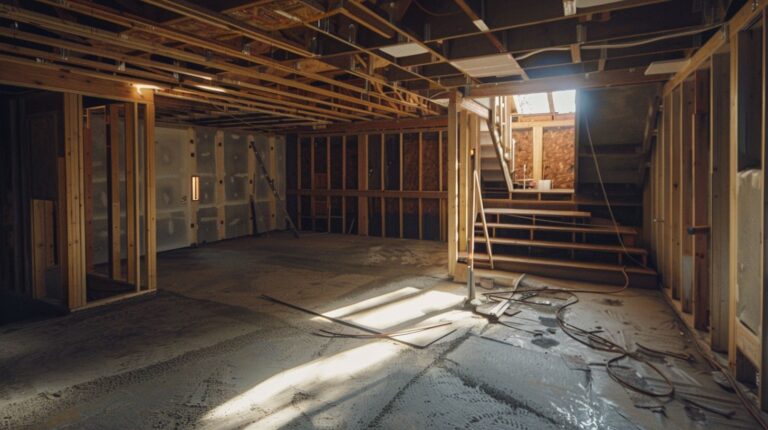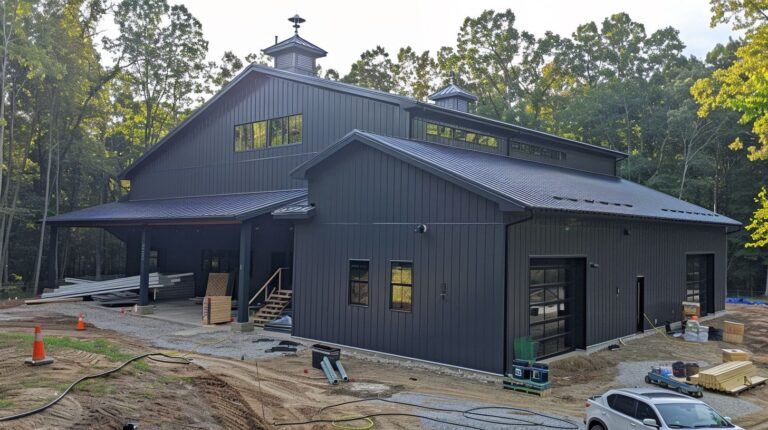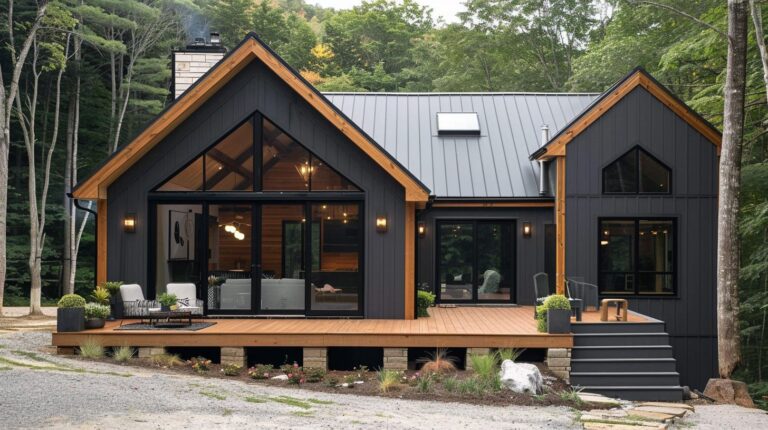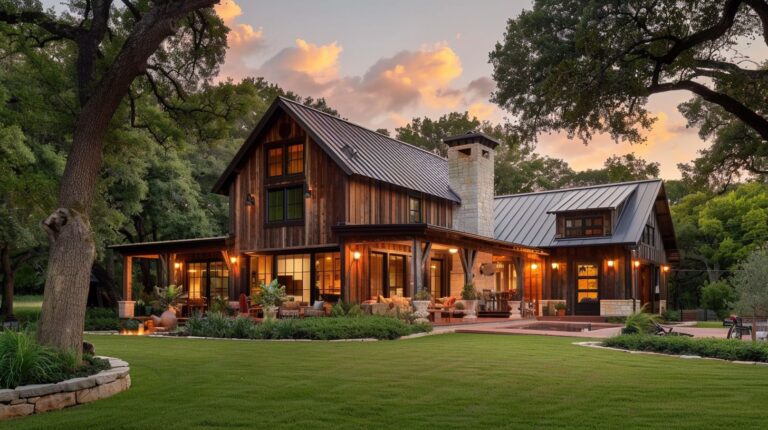Eco-Friendly Living: How Barndominiums Promote Sustainability
In recent years, the concept of eco-friendly living has gained significant traction among those looking to minimize their environmental footprint without sacrificing comfort or style.
In this article, we will explore how barndominiums promote sustainability through the use of recycled materials, energy efficiency, renewable energy systems, and more, highlighting their role in the future of green living.
| Key Takeaways | Details |
|---|---|
| Sustainability of Barndominiums | Barndominiums are a more sustainable choice due to their efficient use of materials, reduced land requirements, and energy-efficient design. |
| Use of Sustainable Materials | The construction of barndominiums incorporates recycled and eco-friendly materials such as steel and reclaimed wood, reducing environmental impact. |
| Energy Efficiency | Advanced insulation, high-efficiency HVAC systems, and the integration of renewable energy sources like solar panels make barndominiums energy-efficient. |
| Water Conservation | Barndominiums employ rainwater harvesting systems and low-flow fixtures to reduce water usage and promote sustainability. |
| Indoor Environmental Quality | The emphasis on natural light, ventilation, and the use of non-toxic materials improves the indoor air quality of barndominiums. |
| Eco-Friendly Landscaping | Landscaping around barndominiums focuses on water conservation, use of native plants, and organic practices, enhancing biodiversity and sustainability. |
| Comparative Advantage Over Traditional Homes | Barndominiums have a lower environmental footprint, better energy efficiency, and utilize sustainable practices more than traditional homes. |
| Future of Eco-Friendly Living | Innovations in smart home technology, green roofing, and net-zero energy strategies are expected to enhance the sustainability of barndominiums further. |
| Real-Life Sustainability Examples | Case studies of sustainable barndominiums showcase the practical implementation of eco-friendly design principles and technologies. |
Section 1: The Sustainability of Barndominiums
Barndominiums stand out for their sustainability, primarily due to their construction materials and energy-efficient design. Unlike traditional homes, barndominiums often use fewer resources and require less land, making them a more sustainable choice overall.
Their design and construction elements, such as increased insulation and efficient systems, result in reduced energy consumption compared to conventional homes. Furthermore, the use of recycled and sustainable materials in barndominium construction promotes a circular economy and reduces environmental impact, showcasing a conscientious approach to building that aligns with eco-friendly living principles.
Section 2: Sustainable Materials in Barndominium Construction
A pivotal aspect of barndominiums’ sustainability lies in their use of environmentally friendly building materials. Steel, the primary component in many barndominiums, is not only durable but also highly recyclable, making it a sustainable choice throughout the construction phase.
Additionally, barndominiums often incorporate reclaimed wood, recycled metal, and other sustainable materials, which not only reduce the environmental impact but also add character and warmth to the home.
Opting for locally sourced materials further lowers the carbon footprint by cutting down on transportation emissions, making barndominiums an exemplary model of sustainable construction practices.
Section 3: Energy Efficiency and Renewable Energy Systems
Energy efficiency is at the heart of barndominiums’ eco-friendly appeal. With advanced insulation techniques, such as spray foam or double-layered insulation, barndominiums maintain internal temperatures more effectively, reducing the need for heating and cooling.
High-efficiency HVAC systems, combined with smart thermostats, optimize energy use throughout the seasons. Furthermore, the incorporation of renewable energy systems like solar panels, wind turbines, or geothermal heating and cooling installations significantly lowers overall energy costs, making barndominiums financially and environmentally sustainable.
The integration of these features underscores barndominiums’ role in promoting a sustainable future, offering a practical solution to energy conservation and environmental stewardship.
By leveraging sustainable materials and innovative energy solutions, barndominiums embody the principles of eco-friendly living. Their rise in popularity not only reflects a growing awareness of environmental issues but also a collective desire for housing that harmonizes with nature while offering modern comforts and conveniences.
Section 4: Water Conservation Techniques
Water conservation is a crucial aspect of sustainable living, and barndominiums are at the forefront of this initiative. By integrating rainwater harvesting systems, these homes can collect and store rainwater for landscaping and non-potable uses, significantly reducing reliance on municipal water supplies.
Additionally, the use of low-flow fixtures in kitchens and bathrooms, along with dual-flush toilets, ensures efficient water use without compromising on functionality. For outdoor landscaping, barndominium owners often employ xeriscaping principles, choosing native plants that require minimal watering, thereby promoting a sustainable and water-efficient environment around their homes.
Section 5: Enhancing Indoor Environmental Quality
The quality of the indoor environment in a barndominium has a direct impact on the health and comfort of its inhabitants. Sustainable design within these structures emphasizes the importance of natural light and ventilation to reduce the need for artificial lighting and mechanical air conditioning, enhancing air quality and energy efficiency.
The selection of non-toxic paints and finishes, along with formaldehyde-free cabinetry and flooring, minimizes indoor air pollutants, contributing to a healthier living space. Furthermore, the incorporation of indoor plants not only beautifies the space but also naturally purifies the air, highlighting the holistic approach to sustainability that barndominiums embody.
Section 6: Landscaping and Resource Conservation
Sustainable landscaping around barndominiums plays a pivotal role in enhancing their eco-friendliness. Incorporating native plants and implementing water-wise landscaping techniques not only conserve water but also create habitats for local wildlife, enriching the biodiversity of the area.
Additionally, the use of organic mulches and natural pest control methods reduces the need for chemical fertilizers and pesticides, further minimizing the environmental impact of these homes. This thoughtful approach to landscaping reflects the broader commitment to resource conservation inherent in the design and lifestyle of barndominium living.
Section 7: Barndominiums vs. Traditional Homes: An Environmental Comparison
When comparing the environmental impact of barndominiums to traditional homes, several distinct advantages emerge. Firstly, the efficient use of materials and space in barndominiums results in a lower overall environmental footprint. Their energy-efficient design, bolstered by increased insulation and the integration of renewable energy systems, leads to reduced energy consumption.
Additionally, the emphasis on using recycled and sustainable materials in their construction supports a circular economy and diminishes the ecological impact associated with building. These factors, combined with sustainable practices like water conservation and eco-friendly landscaping, position barndominiums as a superior choice for environmentally conscious homeowners looking to embrace a sustainable lifestyle.
Barndominiums exemplify a modern approach to living that prioritizes sustainability without sacrificing the quality or aesthetics of the home. Through innovative design, materials selection, and energy management, they offer a practical blueprint for eco-friendly living that aligns with the values of environmental stewardship and conservation.
Section 8: The Future of Eco-Friendly Living with Barndominiums
The future of eco-friendly living through barndominiums looks promising, with ongoing advancements in technology enhancing their sustainability. Innovations in smart home technologies are expected to optimize energy usage further and provide real-time environmental monitoring. This will allow for more efficient and eco-friendly living in barndominiums.
Additionally, the adoption of green roofing and the push towards net-zero energy homes will set new standards in sustainable housing. These developments not only reduce the carbon footprint of barndominiums but also offer homeowners significant savings on energy costs over time.
Section 9: Real-Life Examples of Sustainable Barndominiums
Across the country, real-life examples of sustainable barndominiums serve as inspiration for those looking to embrace eco-friendly living. From structures incorporating solar panels and rainwater collection systems to those utilizing geothermal heating and cooling, these homes exemplify how innovative design can meet sustainability goals.
These case studies highlight the practical application of the principles discussed in this article, showing that living in an eco-friendly barndominium is not only possible but also highly rewarding.
Conclusion
Barndominiums represent a significant shift towards more sustainable living practices within the housing industry. By combining the rustic appeal of traditional barns with modern, eco-friendly design principles, barndominiums offer a unique solution for those seeking to reduce their environmental impact.
The integration of sustainable materials, energy-efficient systems, and water conservation techniques underscores the potential of barndominiums to promote eco-friendly living. As technology evolves and society continues to prioritize sustainability, barndominiums are poised to play a pivotal role in the future of green housing.
Through thoughtful design and the adoption of green technologies, barndominium owners can enjoy the benefits of a sustainable home that is both comfortable and cost-effective. The growing popularity of barndominiums as a sustainable housing option reflects a broader trend towards environmental stewardship and energy efficiency.
As we look to the future, barndominiums stand as a testament to the possibilities of eco-friendly living, offering a blueprint for sustainable homes that do not compromise on style or comfort.

